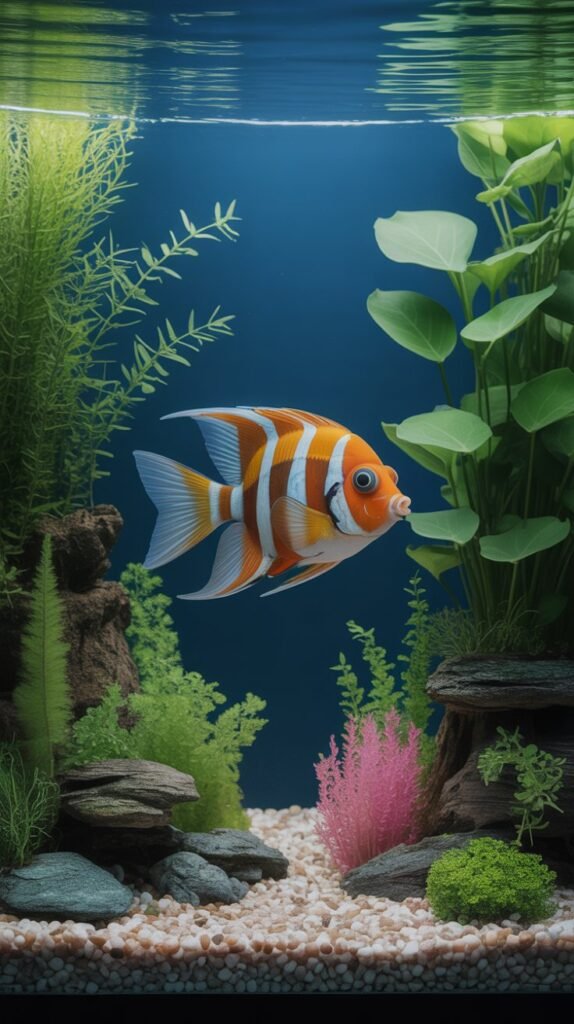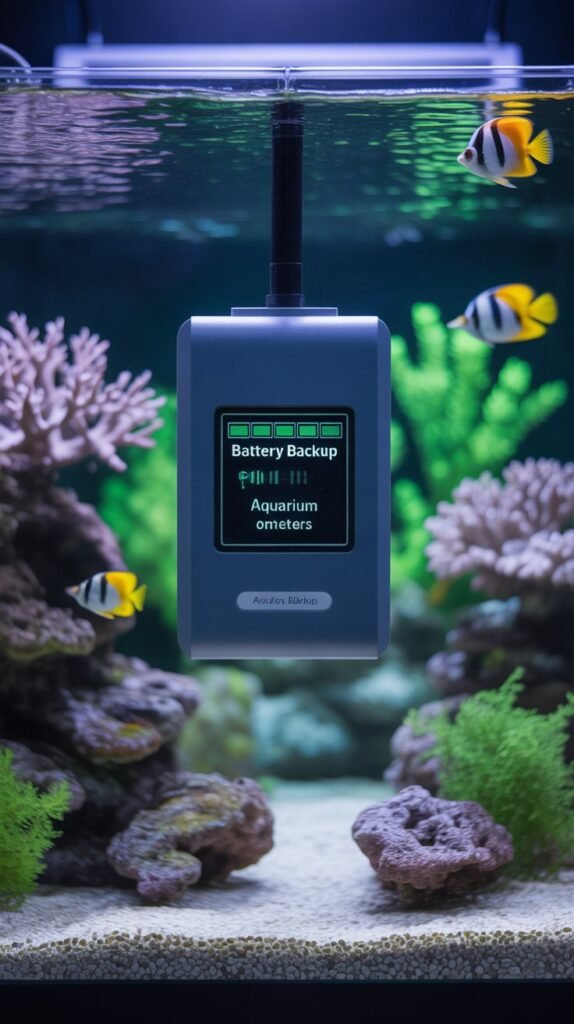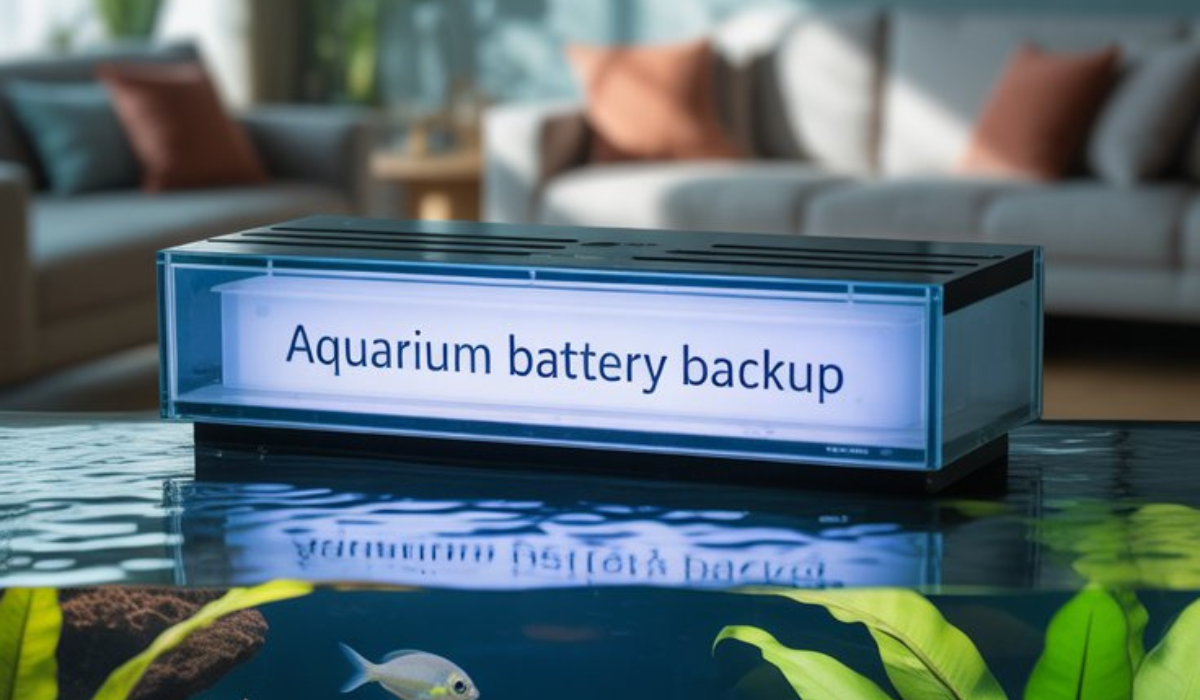When you maintain an aquarium — whether freshwater, planted, cichlid setup, or reef/saltwater tank — you entrust the life of fish, invertebrates, corals, and beneficial bacteria to stable water conditions. Even a short power outage can jeopardize your aquarium’s delicate balance. That’s where an aquarium battery backup (or backup power solution) becomes indispensable.
In this article, you’ll learn:
- Why a backup power system is critical for aquariums
- What types of backup systems exist
- How to calculate the required capacity
- Best practices and wiring strategies
- Cost vs benefit
- Tips and caveats
- Real-world examples and comparisons
- Frequently asked questions
Let’s dive in.
The Risk of Power Outages for Aquariums
Immediate Threat: Oxygen Depletion
Once the power goes out, filtration, pumps, and circulation stop. The biggest immediate danger is oxygen levels falling. In still water, fish and invertebrates consume dissolved oxygen faster than it can diffuse from the surface. In a well-stocked tank, oxygen tension can drop significantly within minutes to an hour.

Secondary Risks: Temperature, CO₂, Circulation
- Temperature swings: Without heaters or chillers (if used), tank temperature can drift. For tropical systems, cold or heat can stress or kill livestock.
- Stagnant water: No flow means waste accumulation, lower efficacy of biological filtration, and stagnation in dead zones.
- pH / CO₂ imbalance: In planted or reef tanks, abrupt stoppage of circulation can disturb gas exchange and pH stability.
Duration Matters
Short outages (10–30 mins) may be survivable without intervention if your system is robust and oxygen reserves are decent. Longer outages (hours) pose serious risks. Many aquarium hobbyists look for battery backups to bridge that gap.
Types of Aquarium Battery Backup / Backup Power Solutions
There is no one-size-fits-all; systems vary by load, cost, and complexity. Key options:
1. UPS (Uninterruptible Power Supply)
These are traditionally used for computers and electronics, but many hobbyists repurpose them for aquariums.
- Pros: Off-the-shelf, auto-switching, safe, includes surge protection
- Cons: Typically AC output (requires inverter), limited duration, inefficiencies with conversion
- Considerations: Many UPS units are designed for short durations (minutes) and may not be optimized for low-power continuous loads.
2. DC Battery Packs / Deep-Cycle Batteries + Inverter or direct connection
You can use deep-cycle lead-acid, AGM, gel, or lithium batteries configured to supply DC or converted to AC via an inverter.
- Pros: Greater control over capacity, longer runtimes, scalable
- Cons: Requires wiring, battery management, ventilation (for lead-acid), cost
3. Dedicated Aquarium Battery Backup Systems
Some manufacturers (especially in reef / marine systems) produce purpose-built backup units that integrate gracefully with DC pumps or lighting. For example, EcoTech Marine offers a battery backup designed for its equipment.
Waterbox also offers battery backups as “reef tank insurance” built to keep pumps running during power loss.
These systems may reduce output during battery mode and manage energy usage more efficiently.
4. Generator or Inverter + Solar / Hybrid Systems
For long outages (multiple hours or days), a generator (gas, propane, or solar + battery inverter system) may be required.
- Pros: Almost unlimited runtime (depending on fuel or battery bank)
- Cons: Expense, noise, maintenance, fuel or sunlight dependency
Many aquarists combine a UPS or DC backup for short outages and a generator or solar setup for extended outages.
How to Size an Aquarium Backup System

Sizing is the heart of a reliable system. Under-sizing leads to premature failure; over-sizing is wasteful. Here is a step-by-step guide.
1. List Critical Loads
Decide which devices must remain powered during an outage. Common choices:
- Return pump / powerhead
- Air pump (air stone / diffuser)
- Overflows / circulation pumps
- Heater / chiller (often optional unless in extreme climates)
- CO₂ systems (if planted tank)
- Dosing pumps / controllers (if desired)
Often, in short outages, hobbyists reduce non-essential loads (e.g. lighting, UV sterilizer) to conserve power.
2. Record Power Consumption
Check wattage or current (amps) for each device. For AC devices (typical), watts = volts × amps. For DC, use amps × voltage. If unknown, measure using a power meter or clamp meter.
Example:
| Device | Wattage |
|---|---|
| Return pump | 10 W |
| Air pump | 5 W |
| Circulation pump | 8 W |
| Heater | 50 W (optional) |
| Total (essential) | ~23 W |
3. Add Safety Margin
Add ~20–30% to account for inefficiencies, startup surges, inverter losses, aging, etc. So allow for say 25–30 W continuous draw.
4. Determine Required Hours of Backup
Decide how long you want the system to last. e.g., 4 hours, 8 hours, or more. The longer the runtime, the larger (and costlier) your battery/inverter must be.
5. Calculate Watt-Hours and Battery Size (for DC systems)
Watt-hours = (Wattage draw) × (hours of desired backup).
If your total draw is 30 W and you want 6 hours:
30 W × 6 h = 180 Wh
Then convert to battery amp-hours (Ah) depending on battery voltage:
- If using a 12 V battery: Ah = Wh ÷ V → 180 ÷ 12 = 15 Ah
- But you should not fully discharge a battery (especially lead-acid). Use 50% depth of discharge (DoD) or less (for longevity). So you’d need ~30 Ah capacity.
- For lithium, deeper discharge is possible (80–90%), so buffer less.
Include inverter efficiency (e.g., 85–95%) in calculations if converting DC to AC.
6. Inverter / UPS Sizing
Ensure your inverter or UPS can handle the peak load (especially initial surge). Choose a continuous rating higher than your sum wattage plus headroom, and check surge ratings
Real Comparisons & Practical Observations
BulkReef Supply ran tests comparing standard UPS systems vs specially built DC battery backups powering a VorTech MP10 pump.
- They found that UPS systems with AC conversion had shorter runtimes due to inefficiencies in the AC/DC inversion.
- In contrast, a DC battery backup running directly (or stepping down) could last many times longer.
- In one test, small UPS units delivered around 5–6 hours of runtime, while a battery backup dedicated to DC pumps lasted 81.5 hours (because it reduced power draw and avoided conversion inefficiencies).
On aquarium forums (e.g. Reddit), some users report using computer UPS units (e.g. 600VA APC) to back up filters and air pumps. But others note that these last only a short time and are not optimized for aquatic loads.
One user said:
“Ecotech makes a battery back up made specifically for aquariums, but are really expensive. There are people who use a UPS for computers, but they don’t last …”
This underscores that a purpose-built or well-configured system is better than a generic UPS.
Best Practices & Design Tips

Prioritize Flow & Oxygen
During power outages, maintaining water movement and gas exchange is more vital than lighting. Even partial circulation or an air stone helps keep oxygen levels up.
Staged Load Shedding
You can design the backup system to power essential devices first, and non-essential devices (e.g. lighting) later or not at all. Use relays or smart outlets to control what runs on battery.
Battery Type Selection
- Lead-Acid / AGM / Gel (12V deep cycle): Inexpensive, mature tech; but heavy, limited DoD, needs ventilation (for off-gassing).
- Lithium (LiFePO₄ or similar): Higher cost but lighter, longer life, deep discharge capability, more efficient.
- Sealed VRLA: More maintenance-free, but costlier for same capacity.
Inverter Efficiency & Matching
When you convert DC to AC, inefficiencies (often 10-15%) eat into runtime. If possible, use DC loads directly or minimize conversion steps.
Battery Maintenance & Safety
- Avoid deep discharge frequently; keep batteries at safe states-of-charge.
- Use proper fusing and wiring to prevent short circuits.
- For lead-acid, ventilate the battery enclosure (hydrogen gas venting).
- Temperature matters: batteries perform worse in cold or extreme heat.
Testing & Regular Checks
Periodically simulate power loss to confirm the system works and check runtime. Monitor battery voltage, water parameters, and ensure smooth switchover.
Modular / Expandable Design
Start with a backup system for just pumps/air, then expand to support heater or CO₂ when needed. Use modular battery packs or stackable inverters.
Avoid Overload & Over-Engineering
Don’t aim to run everything (lighting, UV sterilizers, etc.) on battery unless essential. Focus on protecting critical life-support systems.
When Is a Backup Worth the Cost?
Yes — even a modest investment can save an entire aquarium. Here are key considerations:
- High-value livestock: Coral colonies, rare fish, high bio-load tanks.
- Frequent outages: If your area experiences blackouts, power cuts, or load shedding, a backup is nearly essential.
- Large systems: Bigger aquariums are more resilient, but also harder to recover if something goes wrong.
- Remote or unattended setups: For vacation, travel, or off-grid setups, having a reliable backup is peace of mind.
- Minimal cost relative to total setup: The cost of a decent battery backup is often a small fraction of the total aquarium investment.
Even a backup that runs only pumps and air for 2–4 hours can make the difference in preventing mass losses.
Example Scenario: Designing a Backup for a 120L Freshwater Tank
Let’s run through a hypothetical:
- Equipment to backup:
– Return pump: 8 W
– Air pump: 4 W
– Circulation pump: 6 W
– Heater (only if critical): 50 W
Assume we want backup for 6 hours, but we will not include heater or lighting in our initial design.
Total load = 8 + 4 + 6 = 18 W.
Add 25% margin → ~22.5 W.
Desired runtime: 6 h → 22.5 × 6 = 135 Wh.
Battery sizing (12 V): 135 ÷ 12 = 11.25 Ah.
Using AGM/lead-acid at 50% usable capacity → need ~22–25 Ah battery.
Then inverter or internal design to match that load.
If you want to incorporate heater, you must raise battery size enormously; often impractical unless outage durations are very short.
Implementation & Wiring Tips
- Use proper gauge wiring (thicker cable for high current) and proper connectors.
- Include fuses or circuit breakers near batteries.
- Use diode or automatic switching relays to switch between mains and battery power.
- Place batteries in a safe, ventilated, dry enclosure.
- Monitor voltages with battery management system (BMS) or voltage cutoff to avoid over-discharge.
- Label all wiring clearly to avoid confusion.
Limitations & Challenges
- Size and weight: High-capacity batteries become bulky and heavy.
- Cost: Lithium systems are ideal but expensive upfront.
- Efficiency losses: Inverters, wiring losses, inefficiencies reduce real runtime.
- Complexity: Building and maintaining a safe, reliable backup system requires electrical knowledge.
- Long outages: Battery systems may only sustain a few hours; for multi-day power loss, generator or solar is needed.
- Maintenance: Batteries age; capacity degrades over time.
- Safety: Risk of short circuits, hydrogen venting (for lead-acid), wiring errors, and thermal issues.
Real User Insights & Experiences
- As mentioned, aquarium hobbyists on Reddit often mention using generic UPS units but find they don’t last long under continuous aquatic load.
- Some reef hobbyists combine a battery system for short-term outages and a backup generator or larger battery bank for extended outages.
These real-world anecdotes confirm that while a UPS can provide a stop-gap, a well-designed battery backup or hybrid system is more resilient and efficient.
Summary & Choosing Your Path
Here’s a concise checklist to guide you:
- Decide what devices are critical (flow, aeration, maybe heater).
- Quantify power usage (watts, amps).
- Determine desired runtime (hours).
- Size battery/inverter accordingly with safety margins.
- Choose battery type (AGM, lithium, etc.).
- Choose switching method (UPS, relay, diode, BMS).
- Test system under load and simulate outages.
- Expand modularly over time if needed (e.g. add heater support).
For many hobbyists, a modest backup that powers pumps and air for 2–6 hours is sufficient. If you live in an area with frequent or long blackouts, combine battery backup with generator or solar alternatives.
Frequently Asked Questions (FAQs)
1. Do I really need a battery backup for my aquarium?
While not always essential, it’s highly recommended—especially for sensitive or high-value systems. Even a few hours of backup can prevent oxygen depletion, reduce stress, and safeguard your livestock.
2. Can I just use a computer UPS?
You can, but typical UPS units are designed for short-term electronics loads, not continuous low-power aquatic systems. They may provide limited runtime and are inefficient due to DC→AC conversion. Many aquarium-specific backups outperform generic UPS units in tests. Bulk Reef Supply
3. How long will a battery backup last?
It depends on your load and battery capacity. A small system drawing 20 W with a 20 Ah battery might last 6 hours (with proper design and no heater). Heavy loads or including heater will shorten runtime drastically.
4. Should I include the heater in the backup?
Only if you absolutely must maintain temperature. Heaters draw significant power; including them demands much larger, more expensive battery systems. Many hobbyists decide to forgo heater support in battery mode, accepting some temperature drift.
5. What type of battery should I choose?
For cost-effectiveness, AGM/gel/lead-acid is common. For better performance, weight, and lifespan, lithium (e.g., LiFePO₄) is ideal despite higher cost.
6. How do I switch between mains and battery smoothly?
Use solid-state relays, automatic transfer switches, or UPS systems designed for seamless switchover. Failing that, you can use diodes, mechanical relays, or manual switches (less ideal).
7. Is it safe to place batteries near the aquarium?
Yes, with precautions. Ensure batteries are in secure, ventilated enclosures. For lead-acid types, ensure hydrogen venting. Avoid water contact and ensure proper insulation.
8. Do I need to maintain my battery backup system?
Yes. Check battery health, recharge cycles, cleanliness, cable integrity, and perform occasional load tests to confirm performance over time.
9. Will aquarium lighting be on during battery mode?
Usually no — lighting is often a non-critical load and is excluded from backup to conserve battery. You can optionally include minimal lighting if required and sized accordingly.
10. Can I scale up later?
Certainly. Many systems are modular. You can add more battery capacity or add another inverter as needed. Design your wiring and components with scalability in mind.

